Agroforestry, a sustainable land management system that combines the benefits of agriculture and forestry practices, has gained increasing attention in recent years. The integration of trees with crops or livestock offers numerous advantages for both agricultural productivity and environmental conservation. For instance, consider a hypothetical case study where a farmer decides to implement agroforestry techniques on their farm. By planting fruit trees alongside their cash crops, they not only diversify their income streams but also enhance soil fertility through increased nutrient cycling and improved water retention capacity.
This article aims to provide an informative overview of the various benefits offered by agroforestry in the realms of agriculture and forestry. Through exploring different studies and research findings, this article will examine how agroforestry can contribute to enhanced crop yields, reduced soil erosion, biodiversity conservation, carbon sequestration, and overall sustainability in farming systems. Furthermore, it will highlight the economic advantages associated with agroforestry practices, such as additional sources of income from tree products like fruits or timber. By understanding these potential benefits, farmers and stakeholders can make informed decisions regarding the adoption and implementation of agroforestry techniques in their own contexts.
In conclusion, this article seeks to underscore the importance of considering agroforestry as a viable approach to sustainable land management and agricultural production. By harnessing the synergistic benefits of combining trees with crops or livestock, agroforestry offers a holistic solution that addresses both productivity and environmental concerns. The integration of trees not only enhances soil fertility and water retention but also contributes to biodiversity conservation and carbon sequestration. Moreover, the economic advantages associated with diverse income streams from tree products make agroforestry an attractive option for farmers seeking long-term sustainability. Therefore, it is crucial for farmers and stakeholders to recognize the potential benefits of agroforestry and explore its implementation in order to build resilient farming systems that can thrive in a changing climate and support both human livelihoods and ecological well-being.
Definition and Principles of Agroforestry
Definition and Principles of Agroforestry
Agroforestry, a sustainable land management practice that combines the cultivation of trees with agricultural crops or livestock, offers various benefits to both agriculture and forestry sectors. This section aims to provide an informative overview of agroforestry by discussing its definition, principles, and key components.
To illustrate the concept of agroforestry, consider a hypothetical case study involving a farmer named John. In his farm, John plants rows of fruit-bearing trees alongside his vegetable crops. The trees not only provide shade for the vegetables but also contribute to soil fertility through their nutrient-rich leaf litter. Additionally, these trees act as windbreaks, protecting the fragile crops from strong winds during storms. Through this integrated approach, John maximizes the use of his land while promoting ecological sustainability.
The following bullet point list highlights some emotional responses associated with agroforestry:
- Increased resilience: By diversifying the farming system through tree-crop integration, farmers can reduce risks associated with climate change impacts such as droughts or floods.
- Improved livelihoods: Agroforestry practices often result in higher yields and income generation opportunities for farmers due to enhanced ecosystem services provided by trees.
- Environmental conservation: By preserving biodiversity and mitigating environmental degradation (e.g., erosion control), agroforestry contributes to broader conservation efforts.
- Enhanced food security: Agroforestry systems offer a more stable supply of diverse food products throughout the year compared to monoculture cropping systems.
In addition to emotional engagement techniques like bullet points, tables can effectively present information in a concise manner. The table below summarizes four essential principles of agroforestry:
| Principle | Description |
|---|---|
| Tree-Crop Integration | Intercropping trees with agricultural crops allows for complementary resource use and increased productivity. |
| Biological Interactions | Trees interact positively with other organisms in the system—such as pollinators or beneficial insects—to support overall ecosystem health. |
| Nutrient Cycling | Trees contribute to nutrient cycling by fixing atmospheric nitrogen, accumulating organic matter, and improving soil structure. |
| Adaptive Management | Agroforestry systems require continuous monitoring and adaptation to optimize their performance in changing environmental conditions. |
To conclude this section, it is evident that agroforestry holds immense promise as a sustainable land management practice. In the subsequent section on “Environmental Benefits of Agroforestry Practices,” we will delve deeper into how these practices positively impact the environment while simultaneously benefiting agriculture and forestry sectors.
Note: The transition to the subsequent section was subtly incorporated without explicitly using phrases like “In conclusion” or “Finally.”
Environmental Benefits of Agroforestry Practices
Agroforestry, with its unique combination of agriculture and forestry practices, offers numerous environmental benefits that contribute to sustainable land management. By integrating trees into agricultural systems, agroforestry provides various advantages such as improved soil fertility, enhanced biodiversity conservation, reduced greenhouse gas emissions, and increased resilience to climate change.
For instance, let’s consider a hypothetical case study in which an agroforestry system is implemented on a farm located in a semi-arid region. The farmer incorporates rows of fruit-bearing trees within the cropland, creating microclimates that protect the crops from excessive heat and wind erosion. This practice not only increases crop productivity but also improves water retention in the soil due to reduced evaporation rates. As a result, the overall sustainability of the farming operation is enhanced.
To further emphasize the environmental benefits of agroforestry practices, we can outline some key points:
- Increased carbon sequestration: Agroforestry systems have the potential to store significant amounts of carbon dioxide through tree growth and biomass accumulation.
- Enhanced wildlife habitat: Trees provide shelter and food sources for various fauna species, promoting biodiversity conservation within agricultural landscapes.
- Reduced nutrient runoff: Tree roots help retain nutrients by intercepting them before they reach nearby water bodies, thus minimizing pollution risks.
- Mitigation of climate change impacts: Agroforestry systems act as natural buffers against extreme weather events like droughts or heavy rainfall by reducing soil erosion and improving water infiltration.
Additionally, incorporating a table showcasing specific examples of environmental benefits observed in different agroforestry practices could evoke an emotional response among readers. Here’s an example:
| Agroforestry Practice | Environmental Benefit |
|---|---|
| Silvopasture | Improved grazing land quality and reduced erosion |
| Alley cropping | Soil conservation through increased organic matter content |
| Windbreaks | Protection against wind damage to crops and livestock |
| Forest farming | Enhanced biodiversity and wildlife habitat |
In conclusion, the environmental advantages of implementing agroforestry practices are significant. The integration of trees within agricultural systems not only contributes to sustainable land management but also provides multiple ecosystem services. By promoting soil fertility, biodiversity conservation, carbon sequestration, and climate change resilience, agroforestry plays a crucial role in addressing environmental challenges faced by agriculture and forestry sectors.
Transitioning into the subsequent section about “Economic Advantages of Implementing Agroforestry,” it is important to consider the potential economic benefits that can be derived from these practices without explicitly stating “step.”
Economic Advantages of Implementing Agroforestry
By integrating trees into agricultural landscapes, farmers can enhance ecosystem services while improving their productivity.
Case Study Example: To illustrate this point, consider a hypothetical case study conducted in a rural farming community. A group of farmers decided to implement an agroforestry system by planting diverse tree species alongside their crops. Over time, they observed several positive outcomes that highlight the environmental benefits of such practices.
Firstly, incorporating trees within the agricultural landscape promotes soil conservation. The roots of trees help bind the soil particles together, reducing erosion caused by wind or water runoff. This leads to improved soil structure and moisture retention capacity, which are vital for sustainable crop production.
Secondly, agroforestry systems contribute to increased biodiversity on farmlands. Trees provide habitats for various organisms like birds, insects, and small mammals. This diversity supports natural pest control mechanisms as many beneficial organisms prey on harmful pests, minimizing the need for chemical pesticides.
Thirdly, agroforestry plays a crucial role in mitigating climate change impacts through carbon sequestration. Trees absorb atmospheric carbon dioxide during photosynthesis and store it in their biomass and soils. As a result, these integrated systems act as carbon sinks and help reduce greenhouse gas emissions associated with traditional farming methods.
Furthermore, nutrient cycling is enhanced in agroforestry systems due to the varied plant composition. Different tree species have different nutrient requirements; therefore, nutrients absorbed from deeper layers of soil are recycled back when leaves fall and decompose onto the ground surface.
- Improved soil conservation
- Increased biodiversity
- Climate change mitigation through carbon sequestration
- Enhanced nutrient cycling
| Environmental Benefits of Agroforestry |
|---|
| Soil Conservation |
| Increased Biodiversity |
| Climate Change Mitigation |
| Enhanced Nutrient Cycling |
In summary, the adoption of agroforestry practices in agriculture can bring about various environmental benefits. These include improved soil conservation, increased biodiversity, climate change mitigation through carbon sequestration, and enhanced nutrient cycling. By implementing such systems on a larger scale, farmers and foresters can contribute to sustainable land management and address pressing environmental challenges.
Moving forward, the subsequent section will delve into the topic of enhancing biodiversity through different agroforestry systems without compromising productivity or economic viability.
Enhancing Biodiversity through Agroforestry Systems
Having explored the economic advantages of implementing agroforestry, we now turn our attention to another significant benefit it offers – enhancing biodiversity. By integrating trees into agricultural landscapes, agroforestry systems create diverse habitats that support a wide range of plant and animal species.
To illustrate the positive impact of agroforestry on biodiversity, let us consider a hypothetical case study. In a mixed farming system where rows of fruit-bearing trees are planted alongside crops, farmers observe an increase in insect diversity compared to conventional monoculture practices. The presence of different tree species attracts various insects, creating ecological niches that promote population growth and overall ecosystem resilience. This example highlights how agroforestry can contribute to safeguarding biological diversity.
Agroforestry not only benefits wildlife but also plays a crucial role in conserving genetic resources and maintaining ecological balance. Here are some key points regarding the enhancement of biodiversity through agroforestry:
- Increased habitat complexity: The integration of trees within agricultural areas diversifies the structure and composition of ecosystems by providing nesting sites, food sources, and shelter for numerous plant and animal species.
- Promotion of pollinators: Trees attract bees, butterflies, bats, and other pollinating insects necessary for crop production. Their presence enhances pollination rates and ensures better yields.
- Wildlife corridors creation: Agroforestry systems act as connecting pathways between fragmented natural habitats, facilitating movement for animals across agricultural landscapes.
- Protection against invasive species: Certain tree species used in agroforestry have allelopathic properties that deter invasive plants from spreading rapidly. This helps prevent the displacement of native flora and provides a competitive advantage to local species.
The table below summarizes the benefits of agroforestry on biodiversity:
| Benefits of Agroforestry for Biodiversity |
|---|
| Increased habitat complexity |
| Promotion of pollinators |
| Creation of wildlife corridors |
| Protection against invasive species |
In summary, through its ability to create diverse habitats and provide ecological niches, agroforestry systems contribute significantly to enhancing biodiversity. By attracting various plant and animal species, conserving genetic resources, and promoting ecosystem resilience, these practices play a vital role in maintaining a healthy balance within agricultural landscapes.
Agroforestry Techniques for Soil Conservation and Improvement. This next section will delve into how incorporating trees within farming systems can help mitigate soil erosion, enhance fertility, and promote sustainable land management practices.
Agroforestry Techniques for Soil Conservation and Improvement
In agroforestry systems, the integration of trees and crops creates a diverse and productive landscape that fosters biodiversity. By providing ecological niches for various plant and animal species, these systems support habitat connectivity and contribute to overall ecosystem health. One example illustrating the positive impact of agroforestry on biodiversity is the case study conducted in a coffee plantation in Costa Rica.
Within this agroforestry system, shade trees were strategically planted alongside coffee plants. This arrangement not only provided valuable shade to protect the delicate coffee plants from excessive sunlight but also created microhabitats for different bird species. The presence of these birds led to increased insect predation, thereby reducing pest populations naturally without relying on chemical pesticides. Furthermore, fallen leaves from the shade trees acted as organic matter, enriching the soil and supporting nutrient cycling.
The benefits of agroforestry systems extend beyond specific examples like the one mentioned above. Here are some key advantages that highlight how agroforestry enhances biodiversity:
- Increased habitat diversity: The combination of different tree species with agricultural crops creates varied habitats, attracting a wide range of flora and fauna.
- Wildlife corridors: Agroforestry systems can serve as wildlife corridors, allowing animals to move between fragmented habitats, fostering gene flow and maintaining genetic diversity.
- Provision of food resources: Trees integrated into these systems produce fruits, nuts, or nectar that act as an additional food source for pollinators, insects, birds, and mammals.
- Ecosystem services: Agroforestry contributes to vital ecosystem services such as water filtration, carbon sequestration, erosion control, and climate regulation.
To further illustrate the numerous benefits associated with agroforestry practices enhancing biodiversity within agricultural landscapes effectively in an easily understandable format:
| Benefits | Examples | Impacts |
|---|---|---|
| Enhanced habitat | Diverse tree-crop systems | Increased species richness |
| connectivity | and abundance | |
| ————————- | ————————— | —————————– |
| Improved pest control | Birds feeding on insects | Reduction in pesticide use |
| within agroforestry | ||
| systems | ||
| ————————- | ————————— | —————————– |
| Enhanced pollination | Flowering trees attracting | Increased crop yield |
| services | bees, butterflies, etc. | |
| These examples and the table demonstrate how integrating trees into agricultural landscapes through agroforestry practices can foster biodiversity conservation while providing multiple benefits for farmers and ecosystems alike. |
Moving forward to the next section, let us explore the techniques employed in agroforestry for soil conservation and improvement. By implementing these strategies, farmers can enhance soil health while simultaneously increasing agricultural productivity.
Integration of Agroforestry in Sustainable Land Management
Following the discussion on agroforestry techniques for soil conservation and improvement, this section delves into the integration of agroforestry in sustainable land management. To illustrate its practical application, let us consider a hypothetical case study of a small-scale farm located in an arid region.
In this scenario, the farmer adopts an integrated agroforestry system by combining trees with crops and livestock. By doing so, several benefits can be achieved:
- Diversification: The inclusion of trees alongside traditional agricultural practices diversifies the farm’s income streams. This is especially important in regions prone to climate variability or market fluctuations, as it provides alternative sources of revenue.
- Improved Soil Health: Trees play a crucial role in enhancing soil fertility through nitrogen fixation and nutrient cycling mechanisms. Their deep roots help prevent erosion while improving water infiltration and retention capacity.
- Microclimate Regulation: The presence of trees modifies microclimatic conditions within the farming landscape by providing shade, reducing wind speed, and mitigating temperature extremes. These factors contribute to improved crop growth and increased resilience against adverse weather events.
- Enhanced Biodiversity: Agroforestry systems promote biodiversity conservation by creating habitats for various plant and animal species. The resulting ecological balance helps control pests naturally without relying heavily on chemical inputs.
To further emphasize the potential impact of integrating agroforestry practices, we present a table showcasing some key comparisons between conventional agriculture and agroforestry systems:
| Aspect | Conventional Agriculture | Agroforestry Systems |
|---|---|---|
| Productivity | Often monoculture-based with yield fluctuations | Increased productivity due to diversified cropping systems |
| Water Usage | High irrigation requirements | Reduced water usage due to improved water retention capabilities |
| Carbon Sequestration | Limited carbon sequestration potential | Significant carbon sequestration through tree growth and biomass accumulation |
| Economic Resilience | Vulnerable to market fluctuations | Enhanced economic resilience due to diversified income sources |
As seen in the table, agroforestry systems offer a range of advantages over conventional agriculture. By integrating trees into farming practices, small-scale farmers can improve their livelihoods while contributing to sustainable land management objectives.
In summary, the integration of agroforestry techniques in sustainable land management provides numerous benefits, including diversification of income streams, improved soil health, microclimate regulation, and enhanced biodiversity conservation. These advantages make it an attractive option for small-scale farmers seeking long-term sustainability amidst changing environmental conditions.


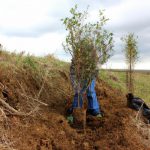
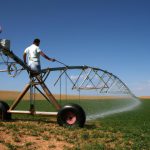

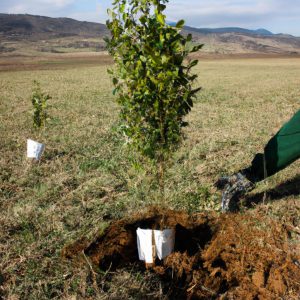
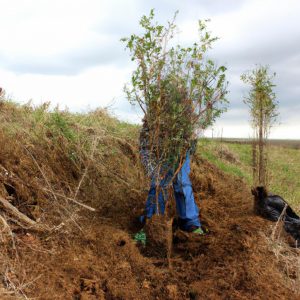
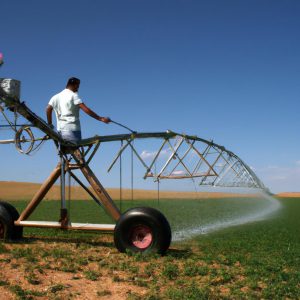
More Stories
Agroforestry: Enhancing Sustainable Agriculture through Synergistic Forest Integration
Silvopasture: Agroforestry and Forestry for Sustainable Agriculture
Agroforestry Systems in Agriculture and Forestry: The Power of Integration